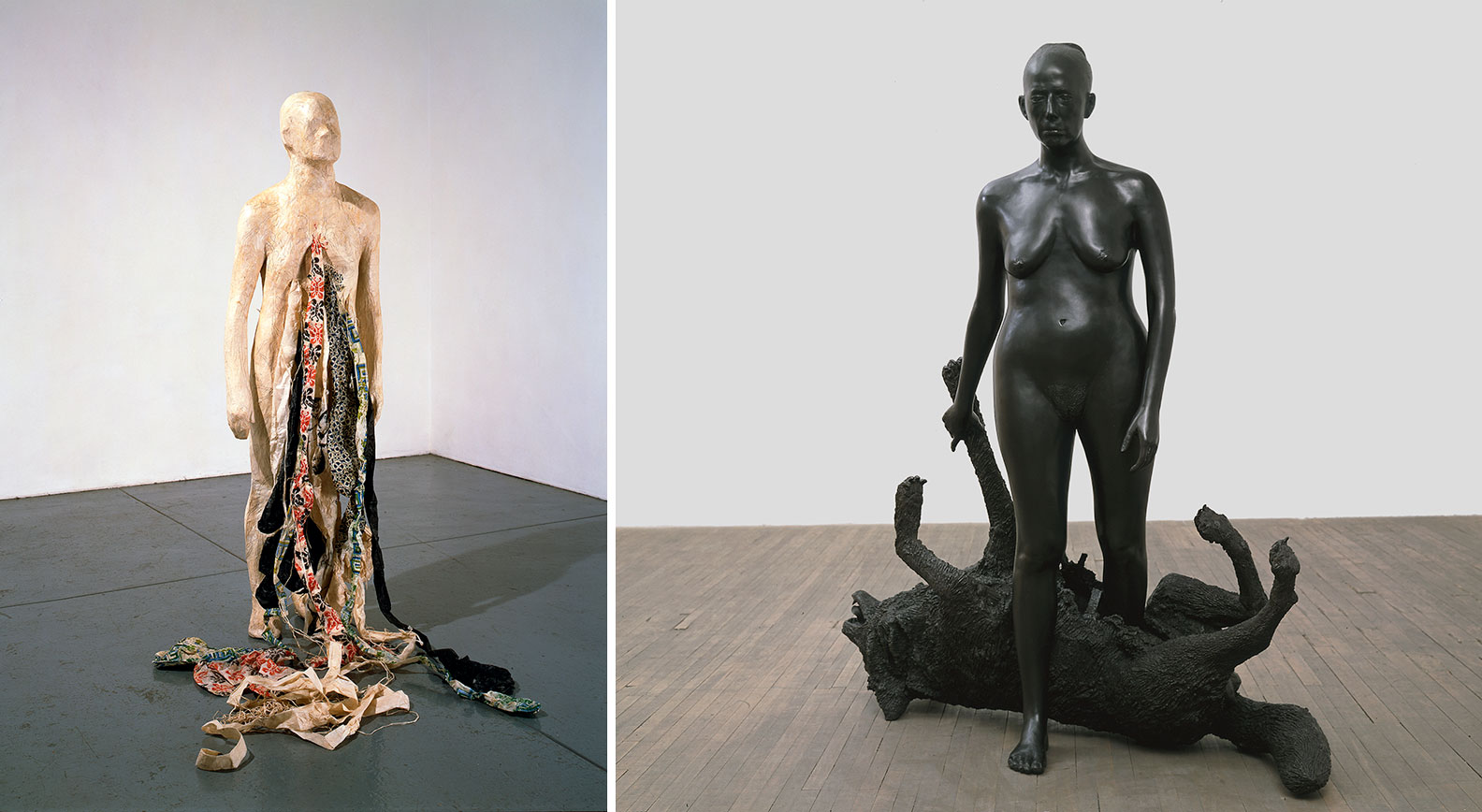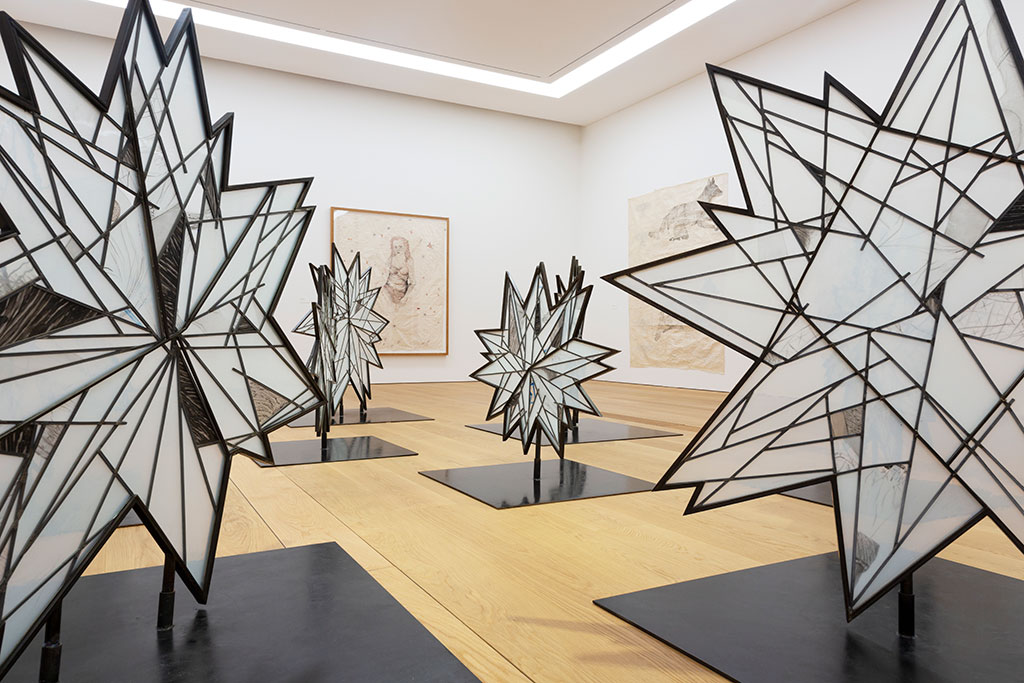ART-PRESENTATION: Kiki Smith-Hearing You with My Eyes
 The work of Kiki Smith is the featured subject of the major exhibition “Hearing You with My Eyes” at the MCBA Musée cantonal des Beaux-Arts of Lausanne. Boasting a selection of nearly one hundred works, some of which are on display for the very first time in Europe, this survey covers almost four decades of artmaking, focusing on a theme that is central to her output yet has been little explored until now, i.e., sensory perception.
The work of Kiki Smith is the featured subject of the major exhibition “Hearing You with My Eyes” at the MCBA Musée cantonal des Beaux-Arts of Lausanne. Boasting a selection of nearly one hundred works, some of which are on display for the very first time in Europe, this survey covers almost four decades of artmaking, focusing on a theme that is central to her output yet has been little explored until now, i.e., sensory perception.
By Efi Michalarou
Photo: MCBA Archive
“Hearing You with My Eyes” is a rare opportunity for the general public to get to know the major themes that run through the American artist’s output, themes that spring from her observation of the human body. Since the early 1980s, Smith has been interested in the body and its workings, its symbolic and political meanings, and its representations and status in social space. She initially sought to describe it fragment by fragment. With books on anatomy serving as her guide and inspiration, she began by copying the organs and systems of the human body, turning an objective eye on a structure that was familiar and foreign to her at the same time. Smith then began to deal with the body starting at its envelope, the skin, a shift in focus that led her to human figures. She introduced a repertory of female figures for the most part, drawn from Biblical and mythological stories as well as folk and fairytales. This added a more narrative dimension to her work. These characters, to whom she has lent her own features at times, have enabled her to go back over a common cultural store of knowledge that is the basis of our imagination. With a contemporary, committed viewpoint, Kiki Smith questions the notions of nature and culture, driven by the will to assert the power of the feminine, the simultaneous vulnerability and force of humans, and our symbiosis with the animal kingdom. The importance granted our senses can be seen in the shift from the microscopic to the macroscopic. It is in light of that shift that MCBA is showcasing today a body of work that plays out in a great variety of techniques. Smith reminds us that the senses are a means of acquiring knowledge. She points up their interconnectivity in the phenomena of perception – as the title of the show suggests – and explores a whole range of sensations, engaging those of visitors, who will find themselves fully involved in turn in confronting the works on display. Finally, even in the materials she has employed – all very tactile, especially paper – she has sought an equivalence with the characteristics of the human body. Smith places human beings at the heart of the living once again, in connection with other animal species, but also with the plant kingdom and the cosmos. Doing so, she has delivered a vibrant plea for both respecting nature and the harmonious and joyous experience of nature that is available to all of us. Likewise she invites us to be mindful of its presence in the world and the fact that it is part of a vast whole. Her work echoes then, especially in the current moment, the growing awareness of the fragility of natural resources. The 2017 series, “The light of the world” exemplifies Kiki Smith’s interest in both the aesthetic and processes of light. Made by etching delicate marks onto Plexiglas plates and then placing them one on top of the other over light sensitive paper, these cyanotype prints are an innovative reworking of the artist’s long-standing printmaking practice. By stacking the plates, Smith plays with the refraction of light, creating varying degrees of sharp and faint impressions. The resulting dreamlike compositions address not only the systems of nature, but also to the ways in which light shapes, distorts, clarifies and blurs the world around us. The evolution of Kiki Smith’s work is often described as running through several stages in a logical progression. The initial focus on fluids, secretions, systems (circulatory, digestive, endocrine, muscular, etc.), internal organs, and the smallest anatomical elements gave way to an assessment of the body in its entirety, and finally, to the perception of human beings in their surroundings through their reciprocity with other animals, nature, and the cosmic order. This developmental arc from the microscopic to the macroscopic, from the inner to the outer body, and from fragmentation to the whole and even to its dematerialization (the conscious-ness of the living and the spirit of the dead) is clearly present thematically and iconographically, and retrospectively attested by the artist herself. Nevertheless, I think it is equally possible to consider these forty or so years of artmaking as one true body of work, in order to point out its internal interactions, rather than as succeeding phases of the artist’s output. We can indeed observe numerous mechanisms of interconnectivity that create the conditions for a singular sensory situation, one that directly affects our perception. Although she has never expressed it in this way or deliberately worked it into her art, the artist demonstrates in her body of work the active nature of perception. Whether by heightening our senses or reconfiguring their hierarchy, she creates a situation of synesthesia—in the sense of an illogical interaction between them—that seems naïve at times but always stimulating and alive. This phenomenon is never more powerful than in the context of an exhibition, where her works collide and run into one another in a space that visitors move through and around and look, multiplying their points of view.
Info: Curator: Laurence Schmidlin, MCBA Musée cantonal des Beaux-Arts of Lausanne, Place de la Gare 16, Lausanne, Duration: 9/10/20-10/1/21, Days & Hours: Tue-Wed & Fri-Sun 10:00-18:00, Thu 10:00-20:00, www.mcba.ch

Right: Kiki Smith Rapture, 2001 Bronze 170.8 x 157.5 x 66.7 cm © Kiki Smith, Courtesy Pace Gallery Photo: Richard-Max Tremblay, Courtesy Pace Gallery




Right: Kiki Smith, Congregation, 2014, Cotton Jacquard tapestry, 294.6 x 193 cm, Publisher: Magnolia Editions, Oakland/CA, © Kiki Smith, Courtesy Pace Gallery, Photo: Tom Barratt, Courtesy Pace Gallery



